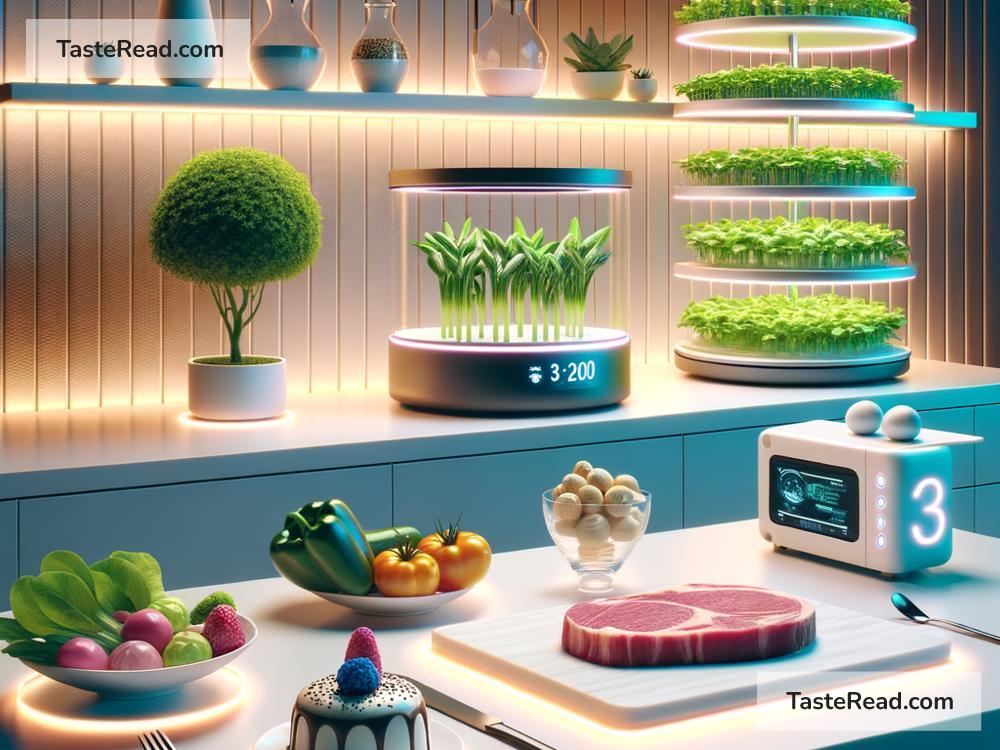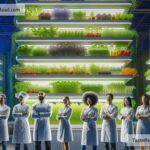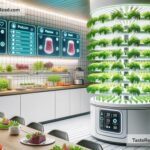The Future of Food and Transformative Systemic Innovation
Food is something we all need to survive. It connects people, cultures, and nature in powerful ways. Yet, the world’s food system is facing big challenges. Climate change, population growth, resource depletion, and changing diets are putting immense pressure on how food is grown, distributed, and consumed. At the same time, millions of people still go hungry, while others are struggling with health problems like obesity or diabetes due to unhealthy diets.
The good news is that we have the tools, creativity, and knowledge to rethink food for a better future. The future of food is not just about what we eat but how we innovate to make the entire system smarter, fairer, and more sustainable. In this blog, we’ll explore how transformative systemic innovations are paving the way for healthier people, a healthier planet, and a brighter food future.
Understanding the Problem
Before talking about solutions, let’s consider the key problems in today’s food system:
-
Environmental Impact: Farming takes a huge toll on the planet. Agriculture uses 70% of the world’s freshwater and is responsible for around 30% of global greenhouse gas emissions. Deforestation, soil erosion, and loss of biodiversity are major concerns.
-
Inequality: While some people have more food than they need, others struggle to feed themselves. Food deserts—areas where affordable, healthy food is hard to access—exist even in wealthy countries.
-
Waste: One-third of all food produced worldwide is wasted. That’s about 1.3 billion tons annually. Wasting food not only wastes money but also contributes to greenhouse gas emissions.
-
Unsustainable Diets: People are eating more processed, high-calorie foods that harm their health. This shift in diet has led to a rise in chronic diseases like heart disease and diabetes.
Clearly, the current food system has its flaws. To address these issues effectively, we need systemic innovation—changes that affect the entire network of growing, producing, selling, and consuming food.
What Is Systemic Innovation?
Systemic innovation means rethinking complex systems as a whole. In the case of food, this requires big-picture thinking, creativity, and collaboration across different sectors—science, technology, agriculture, policymaking, businesses, and consumers all play a role. It’s not just about tweaking parts of the system; it’s about transforming it entirely.
These innovations promise to change how we produce food, protect the environment, and ensure access to nutritious meals for everyone. Let’s take a closer look.
Key Innovations Transforming the Future of Food
- Vertical Farming and Controlled Environments
Imagine growing food in skyscrapers or warehouses instead of fields. Vertical farming uses state-of-the-art technology to grow crops indoors in stacked layers, often under LED lights and in controlled climates. These farms use much less water and land and don’t rely on chemical pesticides. Farmers can grow fresh food year-round, even in urban areas, reducing transportation costs and carbon emissions.
Vertical farming is already transforming cities like Singapore and New York. Although still costly, as technology improves, this innovation could play a key role in feeding future populations sustainably.
- Alternative Proteins
Producing meat uses a lot of resources and contributes heavily to climate change. To combat this, scientists and entrepreneurs are developing alternatives like lab-grown meat, plant-based meat (e.g., Beyond Meat and Impossible Foods), and insect proteins. These options offer similar tastes and nutritional benefits while dramatically reducing environmental impact.
Lab-grown or “cultured” meat is produced by growing animal cells in labs—no need to raise or slaughter animals. Though still in its infancy, it holds the potential to revolutionize how we produce protein more ethically and sustainably.
- Precision Agriculture
Precision agriculture uses technologies like sensors, drones, and AI to make farming more efficient. These tools help farmers monitor crops, soil health, and water usage with incredible accuracy. Instead of applying fertilizers and pesticides broadly, farmers can target only the areas that need them, reducing waste and harm to the environment.
With precision agriculture, farming becomes smarter, greener, and more productive—a win for both farmers and the planet.
- Reducing Food Waste
New innovations are tackling food waste through better technology, education, and policies. Apps like Too Good To Go connect consumers with unsold food from restaurants and stores, reducing waste. Smart packaging can monitor food freshness, while AI predicts demand to help stores avoid overstocking.
On a larger scale, governments and nonprofits are working to redistribute surplus food to those in need. Reducing waste is one of the easiest ways to make the food system more efficient and sustainable.
- Regenerative Farming
Instead of harming the soil and environment, regenerative farming aims to restore it. Techniques like crop rotation, no-till farming, and agroforestry help improve soil health, sequester carbon, and boost biodiversity. This approach moves away from industrial farming and emphasizes harmony with nature.
How Consumers Play a Role
While innovation is important, consumers also have a big part to play in the future of food. Every food choice we make affects the system. Here are some ways individuals can contribute:
- Eat sustainably: Choose more plant-based foods and reduce meat consumption. Look for locally grown and seasonal produce.
- Reduce waste: Plan your meals, store food properly, and compost leftovers.
- Support ethical brands: Buy from companies that prioritize sustainability and fair trade practices.
A Shared Responsibility
The future of food requires collaboration across all levels—governments, businesses, farmers, scientists, and individuals. Policymakers must incentivize sustainable farming practices and invest in innovation. And businesses must prioritize planet-friendly solutions while educating consumers.
Food touches every aspect of life, from health to the environment, culture to economy. By embracing systemic innovation, we can build a food system that works for everyone and protects our planet for future generations.
The journey ahead is challenging, but it’s also exciting. With creative solutions and shared responsibility, the future of food looks brighter—and tastier—than ever.


